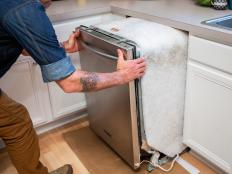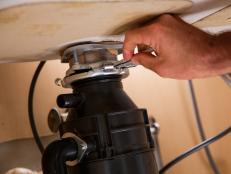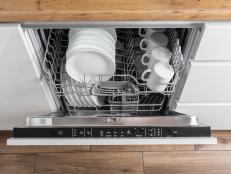How to Use a Dishwasher
Get tips for loading dishes and flatware, choosing the right detergent and selecting the best wash cycle.

A dishwasher is a real luxury to many, but are we using these appliances correctly? Increasingly commonplace in homes and apartments, modern dishwashers are quick, powerful and full of purpose. A multitude of settings allow users to customize their dishwasher cycle to meet any need, whether that be a storm wash, a hot water sanitization cycle or a delicate wash cycle mode that targets glassware balanced in the top rack.
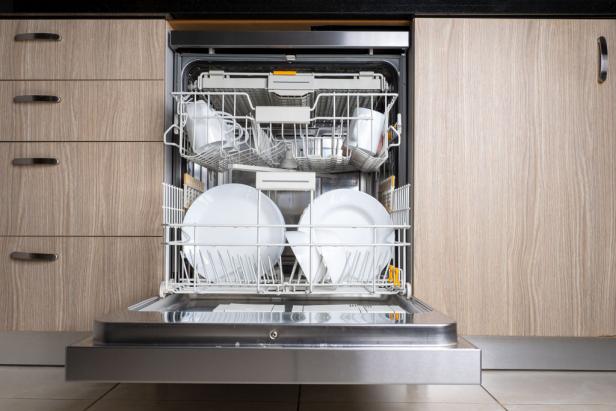
Shutterstock/Oxanaso
Learn the best way to use your kitchen's dishwasher.
Using a dishwasher doesn’t only save time. The majority of dishwasher users agree that it saves energy and water, which in turn saves money — and really, it can add up. According to the US Department of Energy, using an ENERGY STAR® certified dishwasher can save a household upwards of 8,000 gallons of water every year compared to hand-washing dishes.
Load Your Dishwasher
As someone who has operated no fewer than 10 dishwashers between homes and apartments, I can attest to the fact that no two dishwashers seem to be the same. It’s often a struggle to understand the rack positioning, not to mention navigate how your dinnerware fits within the often rigid racks.
What I do know, is that as you get to know your own machine, you slowly begin to solve the puzzle. For example, I know that spoons placed in the top right area of my utensils rack rarely get cleaned well, but plates angled to the right in the back lower shelf will emerge spotless 100% of the time.
Bottom Rack Recommendations
- Place larger items like pans and serving dishes facing downward for stability.
- Ensure that items are not blocking the spray arm for effective cleaning.
- Use the designated sections for plates, bowls and utensils, arranging them strategically to maximize space and water circulation.
Top Rack Recommendations
- Smaller, lightweight pans do well when positioned upside down on the top rack. If there’s a third utensil drawer in your dishwasher, it may block the water from circulating directly above the pan.
- Sort delicate items such as glasses and cups on the top rack, facing downward and securely between the pins to limit movement and prevent pooling water
- Organize plastic items and smaller bowls around the pins and other delicate items. Sometimes, plastic lids are the perfect buffers if you suspect two pieces of glassware may knock together during the cycle.
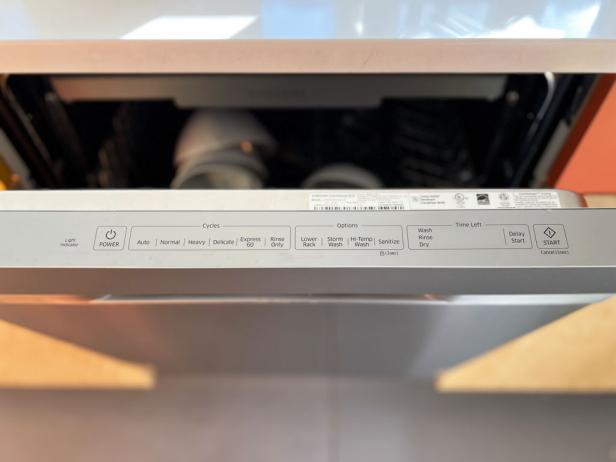
Dishwasher settings allow you to customize your cleaning cycle.
Select Your Cycle
You may be accustomed to tapping “normal cycle” and calling it a day, but think twice:
- Normal cycle is great for everyday dishwashing, but keep in mind that it uses a combination of strong water pressure and high temperatures.
- Quick wash cycle is a shorter, energy-efficient option that works well when your dishes aren’t very dirty. Similarly, the delicate cycle uses a lower water pressure and has a shorter cycle time, making it ideal if you’re trying to quickly wash something that’s only mildly dirty.
- Heavy-duty cycle can be reserved for heavily soiled baking dishes, pots and pans. Heavy wash offers better water pressure. Extended washing and rinsing times are meant to handle tough stains and grease. It’s also a less efficient cycle as a result.
- Auto or sensor cycle can adjust water usage, temperature and cycle time based on soil levels detected, optimizing efficiency and making it easier to save water.
- Sanitize cycle is great for baby bottles, cutting boards and other items that need to be rid of bacteria. The cycle raises the water temperature to kill bacteria and disinfect items. Be wary of putting anything deemed “delicate” through this cycle.
- Half-load/top rack/bottom rack cycles are designed for smaller loads concentrated in location. If you need to wash a bunch of coffee mugs, do a top rack wash. Dirty pots and pans? Put them in the bottom rack and run the appliance.
- Rinse only is just like it sounds. It does not factor detergent into the cycle and merely provides a rinse to items that need just that.
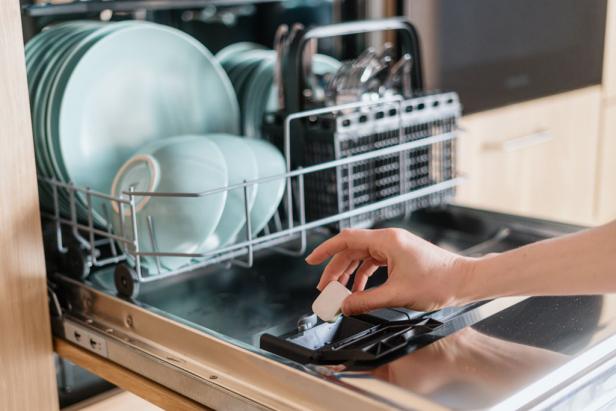
Shutterstock/brizmaker
Add detergent to your dishwasher.
Add Dishwasher Detergents
Dishwasher detergents come in various forms:
- Dishwasher tablets or pods for convenient pre-measured use offer simplicity but may be costlier.
- Powder detergent is good for flexibility in dosage, but can be messy.
- Liquid is quick and easy to squirt into your appliance, but can easily be overused.
What you use likely depends on your personal preferences including scent or eco-friendliness by leveraging plant-based or phosphate-free formulations.
Should you use rinse aid?
Rinse aid is a great glass cleaner product to use with your dishwasher — and good news — it’s only added to the rinse aid dispenser once a month. It distributes itself during each load and improves drying and prevents water spots. It also reduces surface tension, which helps water drain efficiently. You'll notice the difference if your home has hard water.

Emily Fazio
Use the flatware drawer to organize spoons, knives, and forks in the dishwasher.
Run the Appliance
Select your cycle, then sit back and relax!
What Not to Do
- Overcrowd and stack dishes incorrectly. That said, you still want a full load to maximize efficiency.
- Use the wrong amount of detergent. Too much soapy water can lead to residue on the dishes.
- Neglect routine maintenance tasks. Remember to clean the seals and drain of the dishwasher as well as the filter.
- Run your dishwasher during peak hours. Utilize delay start and off-peak hours to save money on electricity.
More Dishwasher Tips
The 10 Best Dishwashers for Every Budget in 2023
If it's time to buy a new dishwasher, read this 101 guide first.
The Easiest Way to Clean a Dishwasher
This simple trick involving vinegar will help you sanitize your most-used appliance.
How to Clean a Dishwasher Filter
Your dishwasher does so much cleaning for you, it’s time you gave it a good cleaning in return.









